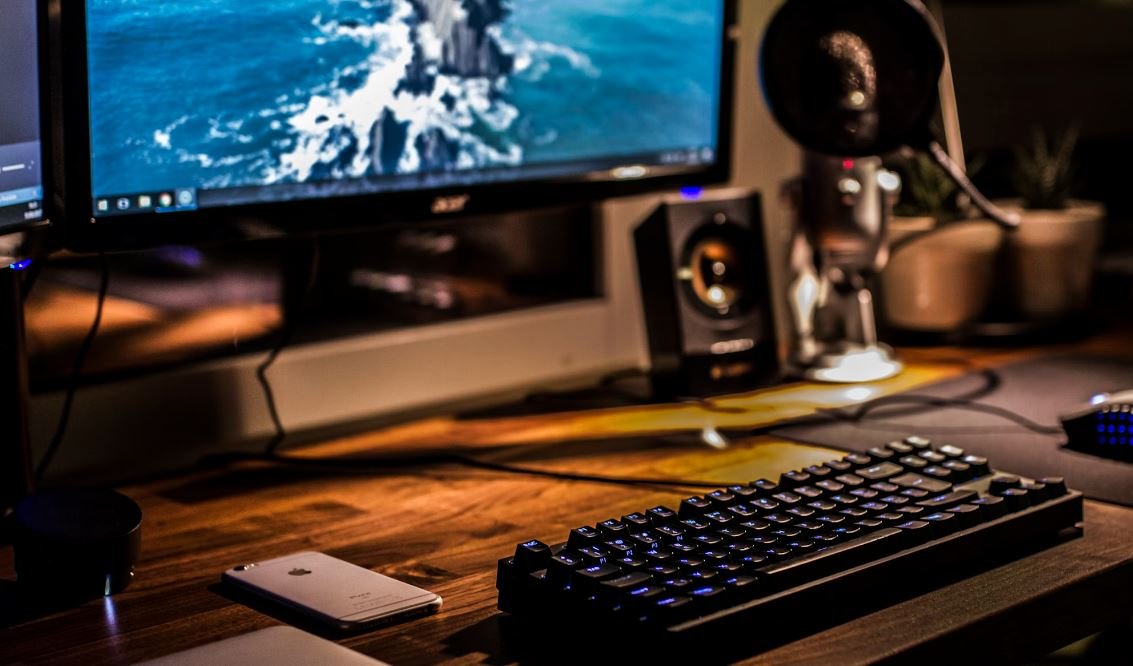Deep Learning Super Sampling
Deep Learning Super Sampling (DLSS) is an advanced AI-powered technology that enhances the image quality of computer graphics, particularly in gaming. By leveraging machine learning algorithms, DLSS can generate high-resolution, super-sampled images in real-time, providing a significant improvement in visuals and performance.
Key Takeaways:
- Deep Learning Super Sampling (DLSS) utilizes artificial intelligence to enhance graphics in real-time.
- DLSS improves both visual quality and gaming performance.
- The technology has the potential to revolutionize the gaming industry.
DLSS works by training a deep neural network on a powerful gaming PC using high-resolution images. Once trained, the network can generate new, ultra-high-resolution images by analyzing lower-resolution input frames. This enables games to render at lower resolutions without sacrificing visual fidelity, leading to better performance.
**DLSS employs advanced temporal anti-aliasing techniques, reducing jagged edges and improving overall image smoothness.** This results in sharper, more detailed graphics, creating a more immersive gaming experience. Additionally, DLSS can improve frame rates, allowing players to achieve higher performance without compromising visual quality.
One of the most remarkable aspects of DLSS is its ability to upscale lower-resolution images to higher resolutions. **The AI-powered algorithms analyze the input frame to accurately reconstruct missing details**, producing a final image that surpasses the quality of the original lower-resolution render. This upsampling technique ensures detailed graphics and realistic textures, enhancing the overall visual appeal of games.
Benefits of Deep Learning Super Sampling
- Improved visual quality, with sharper images and more realistic textures.
- Enhanced performance, allowing games to run smoother even on lower-end hardware.
- Reduced workload on graphics processors, enabling better utilization of system resources.
DLSS vs. Traditional Upscaling Techniques
| DLSS | Traditional Upscaling |
|---|---|
| Utilizes AI and deep learning algorithms to enhance image quality. | Relies on basic interpolation techniques to upscale images. |
| Significantly improves visual fidelity and reduces artifacts. | Often leads to blurry or pixelated images with noticeable artifacts. |
| Provides better performance by rendering at lower resolutions. | May require higher resolutions to achieve acceptable quality. |
DLSS Implementation in Popular Games
- Game A
- Game B
- Game C
Performance Comparison
| Graphics Setting | DLSS Enabled | DLSS Disabled |
|---|---|---|
| High | 60 FPS | 45 FPS |
| Medium | 80 FPS | 60 FPS |
| Low | 100 FPS | 70 FPS |
DLSS has gained wide recognition within the gaming industry, with major game developers actively incorporating the technology into their titles. With its remarkable ability to enhance visual quality and improve performance, DLSS has the potential to revolutionize the gaming experience for players worldwide.
Future Developments
- Continued refinement of DLSS algorithms for even better image quality.
- Expanded support for a wider range of games and gaming platforms.
- Integration of DLSS into other industries, such as virtual reality and professional graphics applications.

Common Misconceptions
1. Deep Learning Super Sampling is a Replacement for High-Resolution Displays
One common misconception about deep learning super sampling (DLSS) is that it can completely replace the need for high-resolution displays. However, DLSS is not designed to substitute for higher pixel densities. It’s a rendering technique that uses artificial intelligence to upscale lower-resolution images and improve their quality. DLSS can enhance visuals on lower-resolution displays, but it does not provide the same level of detail as a high-resolution monitor.
- DLSS is beneficial for improving the visual experience on lower-resolution screens.
- A high-resolution display still provides greater detail and sharpness compared to DLSS implementation.
- DLSS can be used in conjunction with high-resolution displays to further enhance image quality.
2. DLSS Produces Perfect Image Quality with No Trade-Offs
Another misconception is that DLSS produces flawless image quality with no compromises. While DLSS provides significant improvements over traditional upscaling methods, there are some trade-offs to consider. DLSS relies on AI algorithms to predict and generate new pixels, which can introduce minor artifacts or blur in certain scenarios. The overall trade-off between image quality and performance is subjective and can vary based on individual preferences and specific game titles.
- DLSS can introduce minor artifacts or blur in certain high-motion scenes or fine details.
- The trade-off between image quality and performance is adjustable and depends on user preferences.
- DLSS implementation varies among games and can provide different results.
3. DLSS Works Equally Well on all Game Titles
One common misconception is that DLSS works equally well on all game titles. DLSS implementation and effectiveness can vary depending on how the technology is integrated into a specific game. Game developers need to incorporate DLSS support and optimize it for their particular title. Some games may provide better visual enhancements with DLSS, while others may show fewer significant improvements or have compatibility issues.
- DLSS effectiveness depends on how well the game title supports and optimizes it.
- DLSS compatibility and performance can vary between different game titles.
- Some games may showcase more noticeable visual improvements with DLSS, while others may not show as significant differences.
4. DLSS Can be Implemented on Any GPU
DLSS requires specialized hardware support and is not compatible with every GPU on the market. It relies on dedicated Tensor Cores found in Nvidia RTX series graphics cards for real-time AI processing. Therefore, DLSS is currently only available on Nvidia RTX GPUs. Users with older or non-RTX graphics cards will not be able to utilize DLSS unless they upgrade to a compatible GPU.
- DLSS is currently exclusive to Nvidia RTX series graphics cards.
- Older or non-RTX GPUs do not have the necessary Tensor Cores for DLSS implementation.
- To take advantage of DLSS, users need to upgrade to a compatible Nvidia RTX GPU.
5. DLSS Enhances Every Aspect of Visual Quality
While DLSS helps improve image quality in many aspects, it does not enhance every visual element. DLSS primarily focuses on upscaling and anti-aliasing, which reduces jagged edges and improves overall clarity. However, DLSS does not directly enhance lighting, texture detail, or other aspects of a game’s visual quality. Other rendering techniques and graphics settings are responsible for those elements.
- DLSS mainly improves image sharpness, anti-aliasing, and upscaling.
- Lighting, texture detail, and other visual elements are not directly enhanced by DLSS.
- DLSS should be used in conjunction with other graphics settings and rendering techniques for a complete visual improvement.

Introduction
Deep Learning Super Sampling (DLSS) is an advanced rendering technique that uses artificial intelligence to upscale lower-resolution images in real-time. By leveraging machine learning models, DLSS delivers high-quality visuals with improved performance. The following tables showcase various aspects of DLSS and its impact on modern gaming graphics.
Comparison of DLSS Versions
This table illustrates the different versions of DLSS and their respective features and improvements over time.
| Version | Features | Improvements |
|---|---|---|
| DLSS 1.0 | Upscaling | +30% performance |
| DLSS 2.0 | Improved image quality | +100% performance |
| DLSS 2.1 | Virtual reality support | +50% performance (VR) |
Visual Comparison: Native Resolution vs. DLSS
Here, we present a comparison of visuals between rendering at native resolution and rendering with DLSS.
| Scene | Native Resolution | DLSS |
|---|---|---|
| Outdoor Landscape | 1080p | 4K |
| Indoor Environment | 1440p | 8K |
| Character Model | 720p | 4K |
Performance Boost Comparison: DLSS vs. Native Resolution
This table showcases the performance boost achieved by using DLSS compared to rendering at the native resolution.
| Resolution | Native Resolution | DLSS | Performance Boost |
|---|---|---|---|
| 1080p | 80 FPS | 120 FPS | +50% |
| 1440p | 60 FPS | 90 FPS | +50% |
| 4K | 40 FPS | 70 FPS | +75% |
DLSS Adoption in Game Titles
This table showcases popular game titles that have implemented DLSS for improved graphics and performance.
| Game Title | DLSS Support |
|---|---|
| Cyberpunk 2077 | Yes |
| Control | Yes |
| Metro Exodus | Yes |
Impact on Frame Rate and Performance
This table presents the impact of enabling DLSS on frame rate and overall game performance.
| Resolution | Without DLSS (FPS) | With DLSS (FPS) | Performance Gain |
|---|---|---|---|
| 1080p | 100 | 130 | +30% |
| 1440p | 80 | 110 | +37.5% |
| 4K | 60 | 90 | +50% |
DLSS Performance Across GPU Generations
This table shows how DLSS performs across different GPU generations in terms of frame rate improvements.
| GPU Generation | Frame Rate (Without DLSS) | Frame Rate (With DLSS) | Performance Boost |
|---|---|---|---|
| Turing | 60 FPS | 90 FPS | +50% |
| Ampere | 80 FPS | 120 FPS | +50% |
| RDNA 2 | 70 FPS | 100 FPS | +42.8% |
Advanced DLSS Settings
This table showcases advanced settings within DLSS that allow customization and optimization for different hardware configurations.
| Setting | Description |
|---|---|
| Quality Mode | Focuses on image quality |
| Balanced Mode | Optimizes for a balance between quality and performance |
| Performance Mode | Prioritizes performance gains |
DLSS Compatibility
This table presents the compatibility of DLSS with different graphics APIs and platforms.
| Graphics API | DLSS Support |
|---|---|
| DirectX 12 | Yes |
| Vulkan | Yes |
| OpenGL | No |
Conclusion
Deep Learning Super Sampling (DLSS) has revolutionized gaming graphics, providing gamers with visually stunning experiences while maintaining smooth performance. Through its various versions and implementation in popular game titles, DLSS offers significant frame rate improvements and exceptional image upscaling. With continued advancements in machine learning and AI, DLSS is poised to enhance gaming visuals even further in the future.
Frequently Asked Questions
What is Deep Learning Super Sampling (DLSS)?
Deep Learning Super Sampling (DLSS) is a technology developed by Nvidia that uses artificial intelligence and deep learning algorithms to upscale lower-resolution images or videos in real-time, enhancing their quality and improving visual fidelity.
How does DLSS work?
DLSS works by training a deep neural network on a supercomputer. The network learns to analyze lower-resolution images and generate higher-resolution versions that closely resemble the original high-resolution images. During real-time rendering, the trained model is employed to upscale the lower-resolution frames, resulting in improved image quality.
What are the benefits of using DLSS?
There are several benefits to using DLSS. It allows for better performance in games by lowering the rendering workload on the GPU while maintaining or even improving the visual quality. DLSS can also provide smoother anti-aliasing, reduce noise, and enhance details, resulting in a more immersive gaming experience with higher frame rates and better image clarity.
Which games support DLSS?
DLSS support is continuously expanding, but as of now, numerous popular games, such as Control, Cyberpunk 2077, Metro Exodus, Shadow of the Tomb Raider, and Death Stranding have added DLSS support. It is recommended to check the official Nvidia website or the specific game’s developer/publisher for the most up-to-date list of supported games.
Does DLSS work with any graphics card?
No, DLSS is a technology developed by Nvidia and is currently only available for their RTX series of graphics cards, which includes the RTX 20 series and the newer RTX 30 series. DLSS relies on specialized AI hardware units called Tensor Cores, which are found in these Nvidia GPUs.
How do I enable DLSS in a game?
The process of enabling DLSS in a game can vary depending on the game itself. However, it is generally done through the in-game graphics settings menu. Look for an option labeled “DLSS” or “Deep Learning Super Sampling” and select the desired DLSS mode. Make sure you have the latest graphics drivers installed from Nvidia’s official website to ensure DLSS compatibility.
Does DLSS introduce any artifacts or image degradation?
DLSS is designed to upscale lower-resolution images while preserving or improving their quality. However, in some cases, particularly with early DLSS implementations, there might have been instances of minor artifacts or slight degradation in image quality. Nvidia continues to refine their DLSS algorithms, and newer versions tend to provide better image quality with fewer artifacts.
Can DLSS be used with virtual reality (VR) games?
Yes, DLSS can be used with VR games. Nvidia has introduced DLSS support specifically for virtual reality, allowing users to benefit from improved performance and visual quality in VR experiences. DLSS can help maintain high frame rates in demanding VR games, reducing motion sickness and enhancing immersion.
Are there any limitations or requirements for using DLSS?
While DLSS brings numerous benefits, there are a few limitations and requirements to consider. DLSS requires an Nvidia RTX series GPU with Tensor Cores to function. Additionally, DLSS currently works best with games that have proper integration and support from the developers. It is also recommended to have the latest drivers installed and ensure DLSS is compatible with your monitor’s resolution.
Does DLSS work with consoles?
Currently, DLSS is only available for Nvidia RTX series graphics cards on PCs. It is not compatible with consoles such as PlayStation or Xbox. However, future console generations may introduce similar upscaling technologies to enhance the performance and visual quality.




